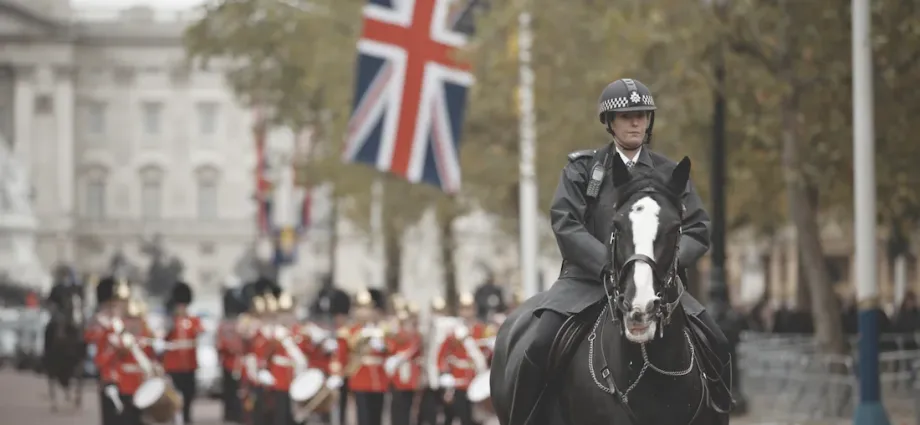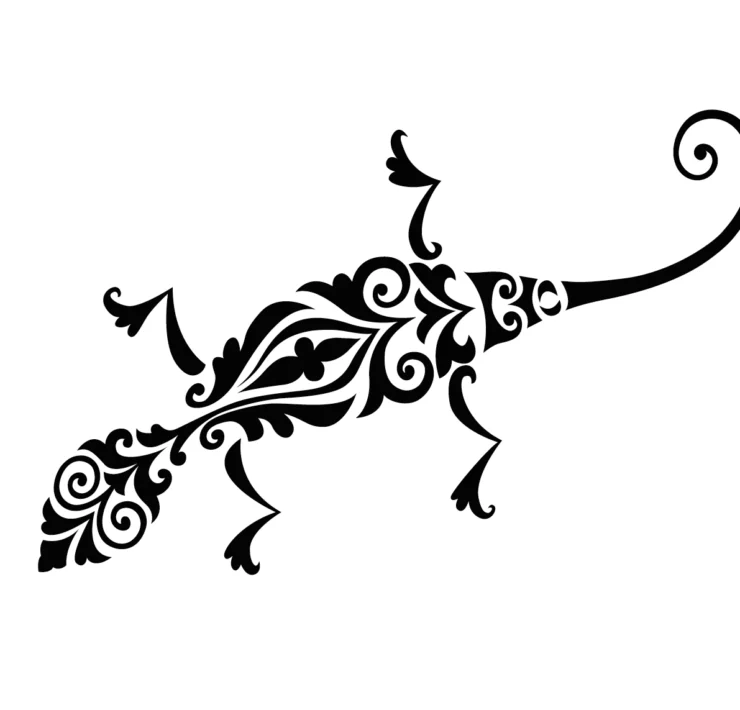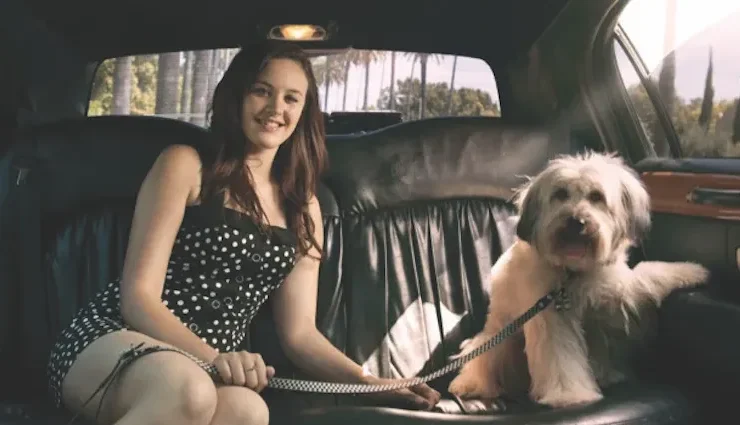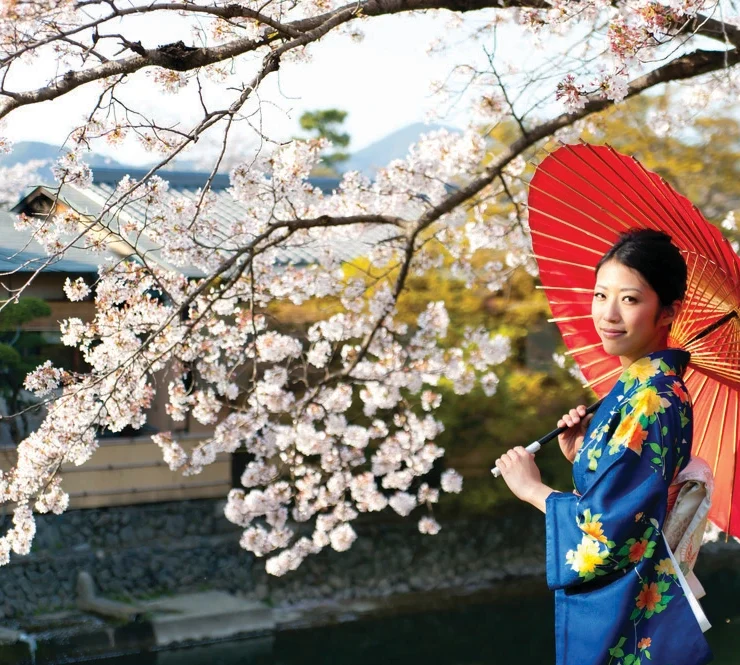The Mounted Police Force Of UK

It is estimated that a trained Mounted Officer on a trained horse can be as effective as a dozen officers on foot.
For centuries, animals have been used in various civil and military services. Horses, camels, dogs and elephants have been popular choices for transport and hauling, communication and even as weapons.
The history of animal use in warfare is as vast as the history of war and warfare itself. Throughout recorded history, horses remain the most commonly used animal in civil and military services, particularly for horse-mounted cavalry.
Although advances in technology and innovation in transportation mediums has led to a decline in the usage and requirement of such a department over the years, horses are still widely used in various parts of the world by the police and are popular for transportation and patrol. Especially through terrain that cars and other vehicles cannot access easily.
The mounted division is still in existence around the world, used mostly for crowd control. London’s Metropolitan Police Force alone employs 140 officers and 120 horses based at eight operational stables around the city.
Other countries that have notably active fleets are USA, Canada, Australia, India and even Oman and Egypt.

The mounted police force in the UK has existed since as early as 1760. New technology and innovative vehicles over the years significantly reduced the need for such a police squad.
The service commonly uses horses or camels and continues to serve in remote areas and in metropolitan areas where their day-to-day function may be picturesque or ceremonial, but they are also employed in crowd control because of their mobile mass and height advantage and are deployed increasingly in the UK for crime prevention and high visibility policing roles.
The added height and visibility that the horses give their riders allow officers to observe a wider area, but it also allows people in the wider area to see the officers and that helps deter crime and helps people find officers when they need them.
CURRENT USES
The Mounted Police Force may be employed for specialised duties ranging from patrol of parks and wilderness areas, where police cars would be impractical or noisy, to riot duty, where the horses serve to intimidate those causing disruption and need to be dispersed or may be sent in to detain trouble makers or offenders from the crowd.
For example, in the UK, mounted police are mostly seen at football matches, although they are also a common sight on the streets of many towns and cities as a visible police presence and crime deterrent during the day and night. Some mounted police units are trained in search and rescue due to the horse’s ability to travel where vehicles cannot.
SELECTION CRITERIA AND TRAINING
Most horses that are employed originate from Ireland and are chosen from a selection of sources that know the requirements of the Metropolitan Police. A half or three-quarter bred animal has been found to be best suited to police work, combining the spirit of a thoroughbred with the strength and stability of a draught horse. The training at Imber Court is individualised for each horse, and usually lasts six months. The training is separated into three stages Red, Amber and Green.
The horses are managed at stables and trained experts are responsible for the health, wellbeing and diet of these grand animals. The height and size of each horse employed in the force shows that these animals are looked after under proper care and are groomed to the highest standards.
An average police force horse is around 6 feet high, thus making the animal perfect for extended visibility of the officers riding them in crowded areas. It is suggested that a trained Mounted Officer on a trained horse can be as effective as a dozen officers on foot.
MAIN DUTIES

CEREMONIAL
This is the most high profile part of a Mounted Officer’s duties. From escorting Royalty and ceremonial military movements to marshalling tourists wishing to see the daily Changing of the Guard at Buckingham Palace, the Mounted Branch are an essential part of the life and security of central London.
On very important events the Mounted Police provide officers to act as the Sovereigns Escort. From the annual Trooping of the Colour Ceremony to Royal Weddings and Funerals there will be the Escort ‘topping’ and ‘tailing’ the procession. This duty is performed to the most exact timing as the slightest deviation from the plans can be disastrous for a procession of several hundred marching soldiers accompanied by Cavalry and Coaches. The Mounted Branch led the procession for Princess Diana’s, and the Queen Mother’s funeral.

DEMONSTRATIONS AND PUBLIC ORDER
Public demonstrations can range from good-natured to openly hostile. Even if the hostility is initially directed at the perceived objects of the demonstration it can soon swing towards police if they are seen to try to prevent any unlawful intentions of the crowd. Extensive and deep public order training has prepared the officer and his mount for these eventualities. It is from the outstanding actions of Mounted Officers and their horses in past years that such incidents as the clearing of the pitch at Wembley in 1923 by PC George Scorey and ‘Billie’ become part of the cultural and collective memory of this country.
Public Order is more defined and can range from a visible presence to intervention to resolve violent disorder at public order events. From a vantage point, 8 feet high, the Mounted Officer is afforded a view that is invaluable at crowded venues. From this position the officer can spot possible potentially violent confrontations or crush situations and alleviate the problem with crowd management tactics.
Directed Patrols by borough policing in a designated area, are patrols in order to show a visible police presence and deter criminals from committing crime. The type of crimes and offences may vary but in general are burglaries, robbery, and theft of and from motor vehicles, rowdiness and vandalism.
Some animal rights groups feel that angry crowds are insensitive to the force and the animals are often attacked back when officers are trying to instil discipline at protests and riots. Animal rights groups also argue that the animals are being exposed to harm and risk unnecessarily.
SPORTING EVENTS
Football and Sporting events; crowd numbers can vary from 4,000 to 80,000 or more. Most crowds are good natured and passive. However, at some events, the mood of the supporters can swing very quickly from friendly banter to violent confrontations. In such situations the Mounted Police can resolve the problems very quickly in a restrained and disciplined way. During the football season a mounted officer could police 3-4 football matches a week.
ACTIVITY RIDE
The ride provides a fast moving display demonstrating a high level of skill and agility from both horse and officer. Inch perfect timing, total commitment, professionalism and complete trust are required as horses jump through fire, a solid paper wall and complete fast crossovers. The riders remove their stirrups, tunics and saddles whilst riding their horses over a series of bush jumps.
Performing to audiences of literally thousands it is also one of the best advertisements and Public relations tool that the Metropolitan Police Service has to offer.
All the riders, horses and ground staff are operational and have been carefully selected because of their commitment and riding ability. The ride was started in the 1950’s for displaying the skills of the Mounted Branch Officers and the incredible training of the horses at the annual horse show held at Imber Court.
Watching these magnificent creatures is a treat for the eyes. The grandeur with which these horses of the police march and patrol, is worth watching. There is always a strong sense of strength attached to the mounted police forces across the world.
Printed in Petigree Magazine Oct / Nov 2013 issue






